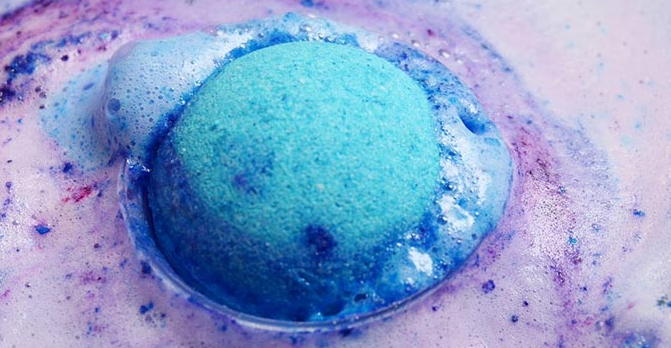
Want Your Bath Bombs To Foam? Check This Out
Share

One of the best items being sold by the soap and toiletry companies out there are the so called "Bath Bombs". These are compacted combinations of Citric Acid, Sodium Bicarbonate and additional fillers such as Corn Starch, topped off with a fragrance. When dropped into bath water they fizz like crazy. When not compressed together, they make a fizzing bath salt with the same reaction. (See below for the chemistry of this reaction)
The Chemistry Store would like to offer you a new twist to the mix. By blending in a surfactant or foaming agent such as Sodium Lauryl Sulfoacetate into your mix, you can produce a luxurious sheet of foam in the tub. In addition, the foam tends to trap your fragrance for a longer period of time as well as emulsify some the oil that you may use in your compression process. There are literally 50 to 100 bath bombs recipes to found on the Internet. Rather than repeat a lot of work other people have done, try a quick search on the net for Bath Bomb recipes.
Typically the ratios in these products are:
- 2 parts Sodium Bicarbonate
- 1 part Citric Acid
- 1 part Corn Starch, Sea Salts, Epsom Salts Etc.
A little fragrance with your oil is used to hold the whole thing together when compressed. A Note: We have seen the use of alcohol and glycerin mixes as a binder. Often times it works well but both these items are hydroscopic (water loving) and will absorb water from the air. This moisture could cause the materials in your bath bomb to react before you want them to or cause storage problems. We like to use oil only; however we don't want to knock a lot of popular and successful recipes out there!
By adding 10% to 15% Sodium Lauryl Sulfoacetate to your mix, you can make your Bath Bombs foam. So how does this equate to some of the formulas you may be using. Let’s take the above mix, but measured in cups.
- 2 cups Sodium Bicarbonate
- 1 cups Citric Acid
- 1 cups Corn Starch, Sea Salts, Epsom Salts Etc.
This is basically a 4 cup mix. 10% of 4 cup mix would be 0.4 cups or a little less than 1/2 cup of Sodium Lauryl Sulfoacetate.
So add a 1/2 cup to your mix. You may need a little more oil to help compress the mix, but otherwise follow your recipe for mixing directions.
Is Sodium Lauryl Sulfoacetate safe to use?
This product at use levels causes minimal to no eye irritation, it is safe in children's bath products. Direct contact with the concentrated product (100%) can cause moderate skin irritation. Normal safety precautions should be taken when working with this product such as safety goggles, dust mask and gloves. This should be done when you make your Bath Bombs regardless whether you use this product. Citric Acid in the eye can be quite irritating.
This product is milder to the skin than other typical foaming agents such as Sodium Lauryl Sulfate. It is hard water stable and will not leave any soap scum. It will help emulsify some of the oils that you may add. As testimony to its nature, this product is often used to replace soap products whenever soap sensitization is found.
Why do Bath Bombs Fizz?
When bath bombs dissolved in water there is a reaction between the acid product Citric Acid and the alkaline product Sodium Bicarbonate. The result is a salt called Sodium Citrate. In the course of the reaction, Carbon Dioxide is released. This causes the bubbles you see, much like carbonated soda water. This same principle was used by Alka Selzter when you had an upset stomach. The other components that are added are for aesthetics such as skin feel after the bath.
Head over to Bubbly Belle to order some of our one-of-a-kind bath bombs.

